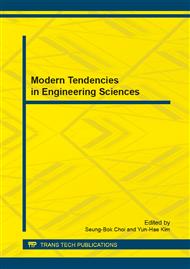p.94
p.101
p.106
p.113
p.123
p.127
p.135
p.140
p.145
Analysis of Structure Technology and Sports Buildings Design Factors
Abstract:
Sports building are different from the common civil buildings, which are characterized by strong professional, high technical requirements, especially in large scale, complex function of large-scale comprehensive stadium, frequently become the latest technology, strong ability of science and technology places. At the same time, structural engineering, material engineering, ecology and intelligence information and other scientific and technological achievements to provide a great degree of freedom and comprehensive technical support for the development of sports buildings, this also fully annotated sports material and cultural attribute of buildings. This paper will analyze the main technical factors involved in sports building design, to explore the basic idea of sports building technology based on.
Info:
Periodical:
Pages:
123-126
Citation:
Online since:
February 2014
Authors:
Keywords:
Price:
Сopyright:
© 2014 Trans Tech Publications Ltd. All Rights Reserved
Share:
Citation:


